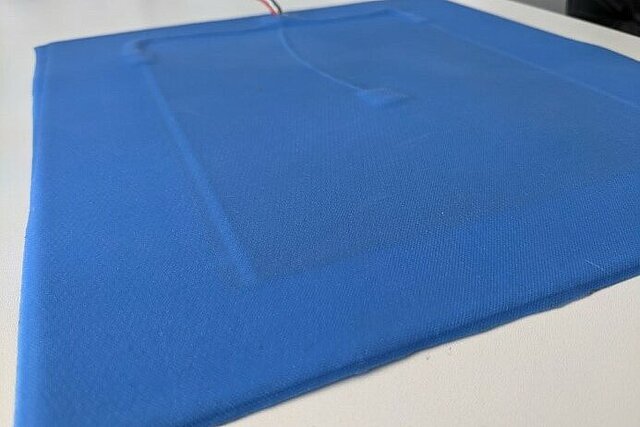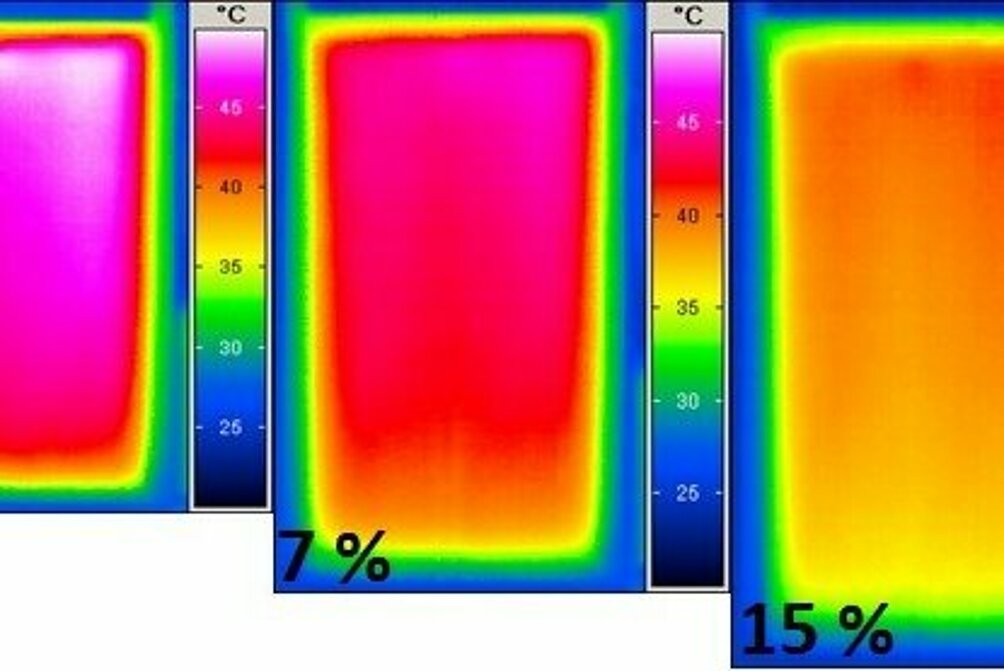Smart membrane pressing technology for manufacturing of high performance composite components of high diversification
Problem definition
Lightweight materials based on fibre-reinforced plastics (FRP) combine excellent mechanical properties with a high degree of functionalisation. However, the cost-effective production of components made of FRP is a major challenge in terms of high product variability and customisation. The main cost driver is the development of suitable moulds as well as the process implementation time. This cost-intensive technology is currently not feasible, especially for SMEs.
Goal
The aim is to develop a novel manufacturing process that enables a significant simplification of conventional consolidation processes combined with high process reliability. The key element is a membrane consisting of a highly flexible and stretchable elastomer with integrated heating elements and sensors for process monitoring and immediate adjustment of relevant process parameters. In combination with suitable adaptive moulding concepts based on either modular or adjustable pin elements, a high degree of flexibility is possible in perspective of component geometry. Thus, small batch sizes for individualised components with customised properties and reproducible material quality can be produced at comparatively low investment and production costs.

Comparison of state of the art compression moulding to the proposed method
Results and outlook
In the course of the project, it was possible to develop highly conductive, flexible and stretchable silicone composite films by incorporation of CNTs using a 3 roll-mill by a facile approach avoiding very high shearing thereby eliminating the possibility of CNTs break down. Such an efficient mixing process allows to tune the conductivity of the films up to a maximum of 105 S/m without affecting its mechanical properties. Subsequently, a highly conductive silver paste was developed, which was then printed as 2 parallel lines onto the conductive films, functioning as electrodes. This self-developed contacting lines are flexible and do not peel off ensuring no power loss even at a stretched state. On connecting the conductive membrane to the DC power supply, it warms up owing to the Joule effect. This composite material provides a window of possibility of heating power from 1000 to 5500 W/m2 at a voltage range of 6 to 60 V, which can be controlled by the content of CNTs, geometry of the sample and distance between the contacts. The heating power is retained almost in its same efficacy when it is stretched up to 10%. There is only a slight loss in efficiency (<10%) when stretched up to 20%. The heating membrane provides homogeneous heating all over the surface, without any hotspots. Presence of small defects like cracks or pin holes does not affect the performance of the membrane. The membrane manufacturing process was scaled up to pilot scale, where in it was possible to develop conductive membrane with a thickness between 0,1 and 0,7 mm; width up to 65 cm continuously.
Based on the results obtained, the realisation of a novel manufacturing element is being pursued at TRL 4, which is ready for use and has a low investment requirement. In particular, SMEs that are willing to enter new markets but currently avoid the risk of investing in novel technologies could benefit from the developed technology.

Heating element

Smart Membrane

IR images depicting heatability under strain at 30 V

Programme: Cornet (266EBR)
Project Reriod: 01.01.2019 – 31.03.2022
Project Partner: FILK Freiberg Institute gGmbH, Germany
ILK, TU Dresden, Germany
Cinnomatech, Poland
Warsaw University of Technology, Poland
INOTEC, Poland

